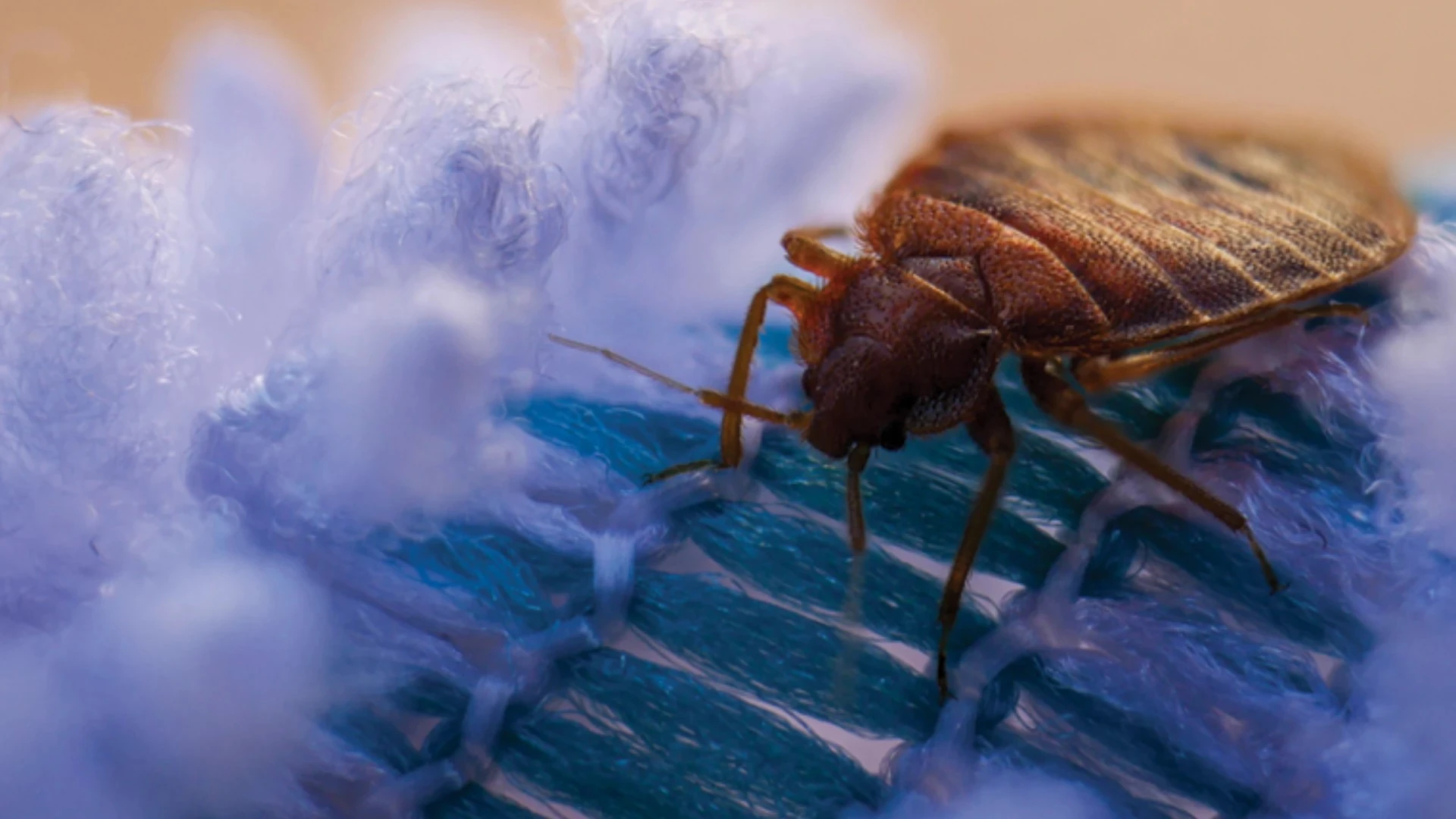Dusting is one of the most effective application techniques for many commonly encountered pests, including bed bugs, cockroaches, ants, bees and wasps. Dusts leave a residual that is effective for some time, depending upon exposure to moisture, ultraviolet (sun) light, sanitation measures, etc., and dusts tend to be more heat resistant. Single exposures to dust can kill insects.
There are a variety of dusts available for use by pest management professionals. Drione (silica gel and pyrethrum), DeltaDust (deltamethrin), Tempo Dust (cyfluthrin), Nibor D (boric acid), BorActin Dust (boric acid), Apicide (carbaryl), EcoExempt Dust (clove and thyme), NIC Dust (limestone, mint and rosemary) and MotherEarth D (diatomaceous earth) are examples of available dust products.
These various types of dusts have differing modes of action on the insect pests involved. Dust may work in one or more different ways: (1) they may shut down the respiratory system of the insect by clogging the breathing openings, called spiracles; (2) diatomaceous earth and silica products will scratch the exoskeleton of the insect, causing the insect to dessicate and die (3) the dust may be ingested when "grooming" or (4) the active ingredient may gradually absorb through the cuticle.
What follows are some helpful tips for dusts and dusting based on experience working with this formulation:
- Wear a respirator when dusting in closed, confined spaces.
- Turn off air ventilation systems before dusting in closed, confined areas. Dust particles are easily carried along on even minor air currents so use care dusting in and around occupied spaces. Always know where your dust is going.
- Only apply dusts to void spaces and areas allowed by the label.
- If using a dust bulb with a metal tip, use extreme caution when working near switch plates or electrical outlets to prevent possible electrocution hazards. Wrap the tip with electrical tape or use a short piece of aquarium tank plastic aeration tubing to insulate the tip from electrical contact.
- Adding a 12- to 16-inch length of aquarium tank aeration tubing provides easier access and allows PMPs to dust hard-to-reach spaces.
- Know your dust! Some are formulated to stand up in moist environments. Others will be compromised by moisture, clump together and become ineffective.
- Some dusts are repellent and may cause insects to move to a new location.
- Don’t hold or store dusts in the bellows for extended periods.
- Dusts should be applied judiciously, deposting a thin layer on treated surfaces. Heavy applications may be repellent and will be less effective.
- Always … always … always … read and follow all label directions for any dust you may use.
- Hold the hand bellows upside down and shake often to keep the contents loose when applying dusts.
- Never fill the bellows more than three-quarters full.
- Keeping a pebble, metal nut or washer inside the bellows will help keep the contents fluffed up, light and aid in product flow when applied.
- When dusting around dishwashers and other built-in appliances, make sure adjacent cabinets have solid, interior side walls.
- Wipe up and remove dust remaining on open, exposed surfaces.
While dusts require more care when applying them to make sure the product does not move off target, choosing and using dusts can provide long-lasting control and greater customer satisfaction.
The author is technical director of Waltham Services, Waltham, Mass. A graduate of the University of Massachusetts, Amherst, where he earned a degree in entomology, Berman has been involved in the pest management industry for more than 40 years. He is active in Pi Chi Omega, the professional pest control fraternity, and is a member of the Copesan Technical Committee. He can be reached at rberman@giemedia.com.
Founded in 1958, Copesan is an alliance of premier pest management companies with locations throughout North America. To learn more, visit www.copesan.com.
*****
What is a Dust?
An insecticidal dust is a ready-to-use formulation, usually consisting of an active ingredient and an inert carrier. Common carriers include finely ground talc, clay and nutshell flour. The carrier is used to dilute the active ingredient, making it possible to spread the dust evenly over the treated surface.
Dusts are probably the most effective of all formulations for killing crawling insect pests. When applied into wall voids, dusts penetrate into less accessible harborages where German cockroaches reside. Dusts are easily picked up by crawling insects because the active ingredient stays on the surface where insects can contact it. Inorganic dusts, such as boric acid and silica gel, provide long-term residual control.
Like other formulations, dusts have some limitations. On exposed surfaces, dusts are unsightly, and if excess amounts of dust are applied, the deposit may be repellent to insects. Care should be taken when filling dusting equipment and when applying dusts in enclosed areas.
(Source: Mallis Handbook of Pest Control, 10th Edition)

Explore the April 2010 Issue
Check out more from this issue and find your next story to read.
Latest from Pest Control Technology
- Rentokil Terminix Expanded in Key Markets with 2024 Acquisitions
- In Memoriam: Joe Cavender
- Certus Acquires Green Wave Pest Solutions
- Liphatech Adds Alex Blahnik to Technical Team
- Do the Right Sting: Stinging Insect Identification, Management, and Safety
- VAGA's 8th Annual Veterans Thanksgiving Appreciation Dinner
- Clark's Blair Smith on the Response to Increased Dengue Fever Cases in Southern California
- WSDA, USDA Announce Eradication of Northern Giant Hornet from U.S.





